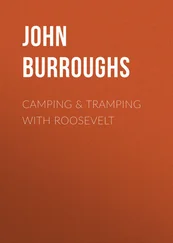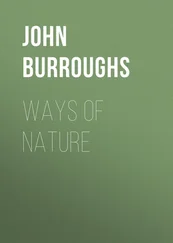John Burroughs - Riverby
Здесь есть возможность читать онлайн «John Burroughs - Riverby» — ознакомительный отрывок электронной книги совершенно бесплатно, а после прочтения отрывка купить полную версию. В некоторых случаях можно слушать аудио, скачать через торрент в формате fb2 и присутствует краткое содержание. Жанр: foreign_antique, foreign_prose, на английском языке. Описание произведения, (предисловие) а так же отзывы посетителей доступны на портале библиотеки ЛибКат.
- Название:Riverby
- Автор:
- Жанр:
- Год:неизвестен
- ISBN:нет данных
- Рейтинг книги:5 / 5. Голосов: 1
-
Избранное:Добавить в избранное
- Отзывы:
-
Ваша оценка:
- 100
- 1
- 2
- 3
- 4
- 5
Riverby: краткое содержание, описание и аннотация
Предлагаем к чтению аннотацию, описание, краткое содержание или предисловие (зависит от того, что написал сам автор книги «Riverby»). Если вы не нашли необходимую информацию о книге — напишите в комментариях, мы постараемся отыскать её.
Riverby — читать онлайн ознакомительный отрывок
Ниже представлен текст книги, разбитый по страницам. Система сохранения места последней прочитанной страницы, позволяет с удобством читать онлайн бесплатно книгу «Riverby», без необходимости каждый раз заново искать на чём Вы остановились. Поставьте закладку, и сможете в любой момент перейти на страницу, на которой закончили чтение.
Интервал:
Закладка:
Just then the whistle of the engine summoned us all aboard, and in a moment we were off.
When one is stranded anywhere in the country in the season of flowers or birds, if he feels any interest in these things he always has something ready at hand to fall back upon. And if he feels no interest in them he will do well to cultivate an interest. The tedium of an eighty-mile drive which I lately took (in September), cutting through parts of three counties, was greatly relieved by noting the various flowers by the roadside. First my attention was attracted by wild thyme making purple patches here and there in the meadows and pastures. I got out of the wagon and gathered some of it. I found honey-bees working upon it, and remembered that it was a famous plant for honey in parts of the Old World. It had probably escaped from some garden; I had never seen it growing wild in this way before. Along the Schoharie Kill, I saw acres of blue-weed, or viper's bugloss, the hairy stems of the plants, when looked at toward the sun, having a frosted appearance.
What is this tall plant by the roadside, thickly hung with pendent clusters of long purplish buds or tassels? The stalk is four feet high, the lower leaves are large and lobed, and the whole effect of the plant is striking. The clusters of purple pendents have a very decorative effect. This is a species of nabalus, of the great composite family, and is sometimes called lion's-foot. The flower is cream-colored, but quite inconspicuous. The noticeable thing about it is the drooping or pendulous clusters of what appear to be buds, but which are the involucres, bundles of purple scales, like little staves, out of which the flower emerges.
In another place I caught sight of something intensely blue in a wet, weedy place, and, on getting some of it, found it to be the closed gentian, a flower to which I have already referred as never opening, but always remaining a bud. Four or five of these blue buds, each like the end of your little finger and as long as the first joint, crown the top of the stalk, set in a rosette of green leaves. It is one of our rarer flowers, and a very interesting one, well worth getting out of the wagon to gather. As I drove through a swampy part of Ulster County, my attention was attracted by a climbing plant overrunning the low bushes by the sluggish streams, and covering them thickly with clusters of dull white flowers. I did not remember ever to have seen it before, and, on taking it home and examining it, found it to be climbing boneset. The flowers are so much like those of boneset that you would suspect their relationship at once.
Without the name, any flower is still more or less a stranger to you. The name betrays its family, its relationship to other flowers, and gives the mind something tangible to grasp. It is very difficult for persons who have had no special training to learn the names of the flowers from the botany. The botany is a sealed book to them. The descriptions of the flowers are in a language which they do not understand at all. And the key is no help to them. It is as much a puzzle as the botany itself. They need a key to unlock the key.
One of these days some one will give us a handbook of our wild flowers, by the aid of which we shall all be able to name those we gather in our walks without the trouble of analyzing them. In this book we shall have a list of all our flowers arranged according to color, as white flowers, blue flowers, yellow flowers, pink flowers, etc., with place of growth and time of blooming; also lists or sub-lists of fragrant flowers, climbing flowers, marsh flowers, meadow flowers, wood flowers, etc., so that, with flower in hand, by running over these lists we shall be pretty sure to find its name. Having got its name, we can turn to Gray or Wood and find a more technical description of it if we choose.
II
THE HEART OF THE SOUTHERN CATSKILLS
On looking at the southern and more distant Catskills from the Hudson River on the east, or on looking at them from the west from some point of vantage in Delaware County, you see, amid the group of mountains, one that looks like the back and shoulders of a gigantic horse. The horse has got his head down grazing; the shoulders are high, and the descent from them down his neck very steep; if he were to lift up his head, one sees that it would be carried far above all other peaks, and that the noble beast might gaze straight to his peers in the Adirondacks or the White Mountains. But the head and neck never come up; some spell or enchantment keeps it down there amid the mighty herd; and the high round shoulders and the smooth strong back of the steed are alone visible. The peak to which I refer is Slide Mountain, the highest of the Catskills by some two hundred feet, and probably the most inaccessible; certainly the hardest to get a view of, it is hedged about so completely by other peaks, – the greatest mountain of them all, and apparently the least willing to be seen; only at a distance of thirty or forty miles is it seen to stand up above all other peaks. It takes its name from a landslide which occurred many years ago down its steep northern side, or down the neck of the grazing steed. The mane of spruce and balsam fir was stripped away for many hundred feet, leaving a long gray streak visible from afar.
Slide Mountain is the centre and the chief of the southern Catskills. Streams flow from its base, and from the base of its subordinates, to all points of the compass, – the Rondout and the Neversink to the south; the Beaverkill to the west; the Esopus to the north; and several lesser streams to the east. With its summit as the centre, a radius of ten miles would include within the circle described but very little cultivated land; only a few poor, wild farms in some of the numerous valleys. The soil is poor, a mixture of gravel and clay, and is subject to slides. It lies in the valleys in ridges and small hillocks, as if dumped there from a huge cart. The tops of the southern Catskills are all capped with a kind of conglomerate, or "pudden stone," – a rock of cemented quartz pebbles which underlies the coal measures. This rock disintegrates under the action of the elements, and the sand and gravel which result are carried into the valleys and make up the most of the soil. From the northern Catskills, so far as I know them, this rock has been swept clean. Low down in the valleys the old red sandstone crops out, and, as you go west into Delaware County, in many places it alone remains and makes up most of the soil, all the superincumbent rock having been carried away.
Slide Mountain had been a summons and a challenge to me for many years. I had fished every stream that it nourished, and had camped in the wilderness on all sides of it, and whenever I had caught a glimpse of its summit I had promised myself to set foot there before another season had passed. But the seasons came and went, and my feet got no nimbler, and Slide Mountain no lower, until finally, one July, seconded by an energetic friend, we thought to bring Slide to terms by approaching him through the mountains on the east. With a farmer's son for guide we struck in by way of Weaver Hollow, and, after a long and desperate climb, contented ourselves with the Wittenberg, instead of Slide. The view from the Wittenberg is in many respects more striking, as you are perched immediately above a broader and more distant sweep of country, and are only about two hundred feet lower. You are here on the eastern brink of the southern Catskills, and the earth falls away at your feet and curves down through an immense stretch of forest till it joins the plain of Shokan, and thence sweeps away to the Hudson and beyond. Slide is southwest of you, six or seven miles distant, but is visible only when you climb into a treetop. I climbed and saluted him, and promised to call next time.
Читать дальшеИнтервал:
Закладка:
Похожие книги на «Riverby»
Представляем Вашему вниманию похожие книги на «Riverby» списком для выбора. Мы отобрали схожую по названию и смыслу литературу в надежде предоставить читателям больше вариантов отыскать новые, интересные, ещё непрочитанные произведения.
Обсуждение, отзывы о книге «Riverby» и просто собственные мнения читателей. Оставьте ваши комментарии, напишите, что Вы думаете о произведении, его смысле или главных героях. Укажите что конкретно понравилось, а что нет, и почему Вы так считаете.












